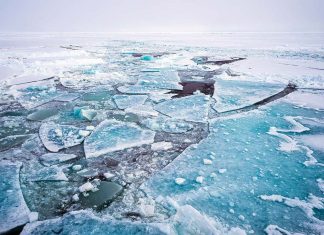A meteor shower occurs when a number of meteors flash seem to radiate (or shoot out from) the same point in the sky. They are usually named for the constellation in which their radiant appears. The meteoroids in a shower usually come from the trail of debris left behind by a comet. In the case of the Geminids and Quadrantids, those meteor showers come from the debris scatted by orbiting asteroids. When Earth’s orbit intersects the dust trail, we see more meteors flaring as the cometary debris encounters our planet’s atmosphere.
Facts About Meteor Showers
- Most meteor showers are caused by debris from comets. When Earth moves through those debris trails, we see increased numbers of comets.
- Two meteor showers are caused by debris shed by asteroids. The Quadrantids are very likely caused by debris from the minor planet 2003 EH1. The Geminid meteor shower comes from debris shed by asteroid 3200 Phaethon.
- The Orionid Meteor shower (which occurs in late October each year) is created by dust and debris left behind by the passage of Comet 1P/Halley.
- Meteors fall to Earth during the day, although we can’t see them.
- It is very rare that a meteorite will strike a human being. It’s more likely that it will fall into the ocean.
- The best time to view a meteor shower is in the early morning hours, preferably on a dark, moonless night.
- The earliest record of the Perseids meteor shower is found in Chinese annals from 36 AD.
Famous Meteor Showers
There are several famous and easy-to-observe meteor showers. The Perseids occur in mid-August when Earth encounters the debris trail from Comet Swift-Tuttle. They appear to radiate from a point in the constellation Perseus. The shower lasts from mid-July to late August, with a peak around August 12th each year.
The Leonid meteor shower can be a very busy one. It occurs each year in mid-November, and rains debris from Comet 55P/Tempel-Tuttle. In 1833, observers estimated that hundreds of thousands of meteors flared through the sky. Observers wait for it each year, hoping for another spectacular show, emanating from the direction of the constellation Leo.
The Geminid meteor shower occurs in December, when Earth crosses the path of the asteroid 3200 Phaethon. The meteors appear to come from the direction of the constellation Gemini, and observers have noted that they move more slowly than other meteors.
In late April, the Lyrids bring pieces of comet C/1861 G1/Thatcher back to Earth, which seem to radiate from the constellation Lyra. The peak of this storm is around April 22. Every 60 years or so this shower becomes more intense.
































